New! Weed! Click here
What's in bloom in June Wildflowers in our region that bloom in June. Weeds! Click here
Wild Native Azalea, Rhododendron canadense, Rhododendron pericyclymenoides and others. Perennials native to northeastern North America, From Pennsylvania and New Jersey north to the eastern Canadian provinces. A thinly leaved erect-branch shrub, three to four feet in height. Showy clusters of rosy pink flowers occur in terminal clusters. Its flowers blooms before leaves open. Prefers bogs and wet slopes and woodlands; likes acid soil. Bloom size is an inch or more. Blooms late May well into June.
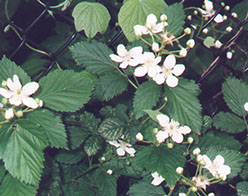
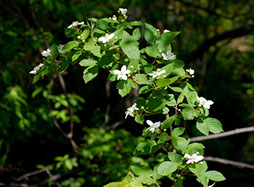
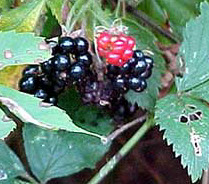
Common Blackberry, Rubus allegheniensis. Flowers late May into early June; fruits in July.
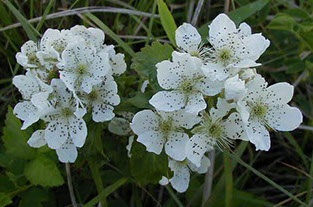

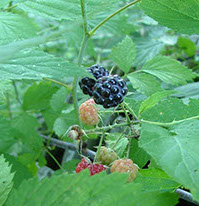
Black Raspberry, Rubus occidentalis, native to eastern North America. Flowers late May into early June; fruits in July.

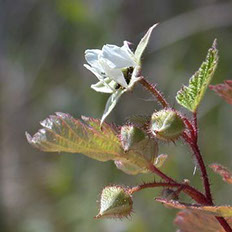

American Red Raspberry, Rubus idaeus, North Amderican native, Flowers late May into early June; fruits in July. Most easily distinguished from the other Rubus by its red canes (stems) and fine, fuzzy thorns.
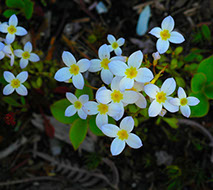
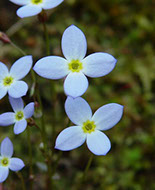
_hedyotis_caerulea.jpg?crc=98150787)
Bluets, Houstonia caerulea, native to eastern North America is a delicate perennial found in compact tufts about eight inches high Tiny flowers, barely a half inch across, are pale blue with yellow centers. Occurs in open fields and woods from April to June.
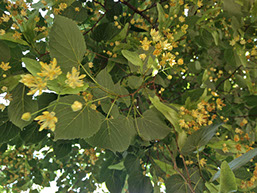
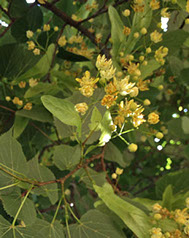
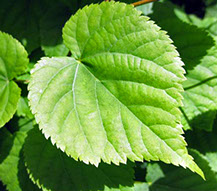
American Basswood, Tilia americana, a member of the Linden family. Native to northeastern US and middle and upper midwest and southeastern Canada. Plenty of these in Valley Forge Park. A very fragrant bloom!
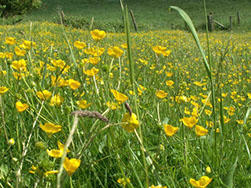

Buttercups, Ranunculus species. Many species of buttercups may found in our area, some native some not. Most bloom spring through fall.

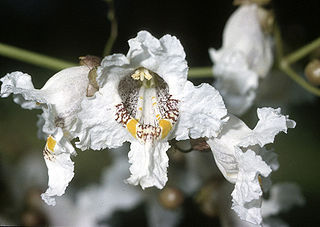
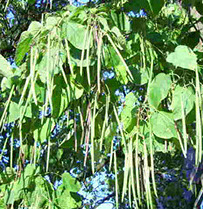
Catalpa or Catawba Tree, Catalpa speciosa, a native tree now often found outside its original range, the middle Mississippi and lower Ohio River valleys. Quite common along local rivers, it was planted for its beautiful flowers and dense shade and now thrives in the wild. Smooth-edged heart shaped leaves. It fruit looks like long string beans. Blooms early to mid June.
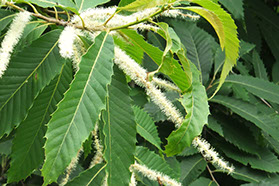
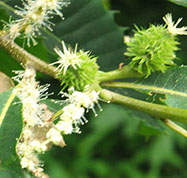
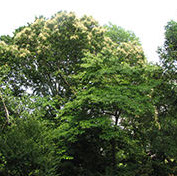
American Chestnut, Castanea dentata. Once the largest and most dominate tree in the eastern forest, now almost gone due to introduced blight. Learn more about this amazing tree on our American Chestnut page.


Columbine, Eastern red columbine, Wild red columbine; Aquilegia canadensis, erect perennial, up to 2 foot, with showy red and yellow-centered flowers. Heavy, drooping flowers attract insects and hummingbirds. Bloom size about an inch and a half inch, and they bloom mid-May into June in our area.
1.jpg?crc=240919899)
3-crop-u14688.jpg?crc=4284324365)
2.jpg?crc=330717236)
Daisy Fleabane, Erigeron annuus. Also Philadelphia fleabane, Erigeron philadelphicus, Both look nearly the same, but the latter plant has leaves that closly clasp the stem. Both bloom May up to frost. They are annuals native to most of North America, with erect stem with spreading hairs that bear flower heads with tightly packed, finely-petaled, white to pink ray flowers around central yellow disk. Bloom size is about a half inch across.



Oxeye Daisy, Leucanthemum vulgare, syn. Chrysanthemum leucanthemum. An annual Eurasian native now found in all US states and Canadian provinces. Common white-and-yellow daisy of the fields, with solitary flowers on slender, erect stems. Flowers are an inch or two across and bloom from late May throughout summer.
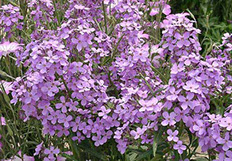
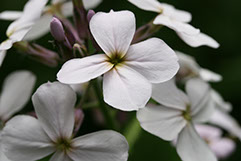
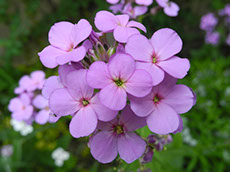
Dame's Rocket, Hesperis matronalis. A Europen native biennial. Flower has four petals, unlike the similar Wild Blue Phlox, which has five. Flowers can be purple, white and all shades in between, even streaked. Upright, multi-branched, growing three foot tall. Grows along roadways, woodland edges, and openings in forest interiors. Invasive, and can displace native plants.
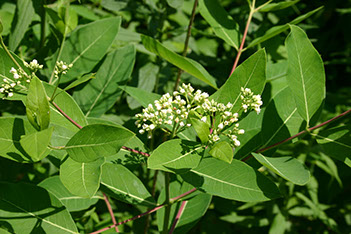
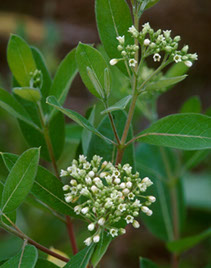
Dogbane, Indian Hemp, Apocynum cannabinum, is a perennial herb native to most of North America. It is highly toxic if eaten, and is a hazard for grazing livestock. It is found in open medows and woodland verges. The cannabinum in its name refers to the similarity to the hemp fiber plant, and it contains no psychoactive drug. Blooms Julne to August. Attracts butterflies.
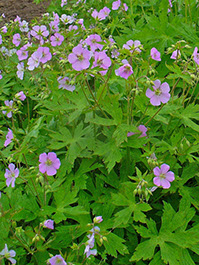


Wild Geranium, Geranium maculatum, native to eastern North America. Five-petaled flowers about an inch acrosss on 1 to 3 foott stem. Semi-evergreen perennial well known for its 5- to 6-parted, deeply cut leaves. Prefers woods, thickets, and meadows. Blooms May into June in our region.
1-crop-u14719.jpg?crc=390019689)
4-crop-u14721.jpg?crc=11700268)
.jpg?crc=4282645095)
Golden Ragwort, Senecio aureus. A perennial evergreen that blooms April through July. Native to eastern North America. The flowers are about a half inch across abd grow on strons stems about 1 to 3 foot tall.
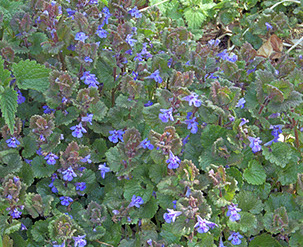
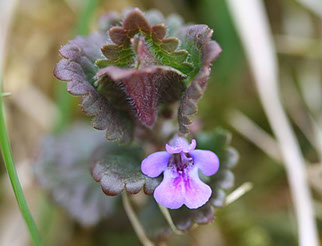
Ground Ivy, Glechoma hederacea, naturalized native of Europe and parts of Asia. Blooms May to July. Tiny flowers, usually a half inch or less across, and lobed leaves. Flowers are often in clusters of two or three. Prefers shaded, moist areas. The plant is toxic when eaten.

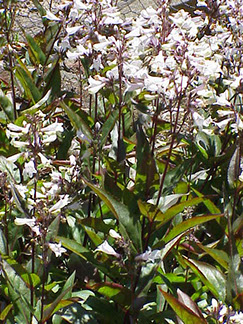
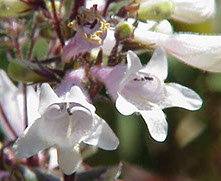
Foxglove Beardtongue, Penstemon digitalis, a perennial native to much of eastern North America. Blooms June into July.
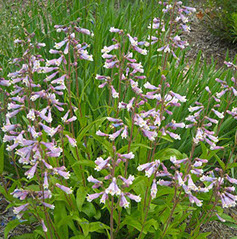

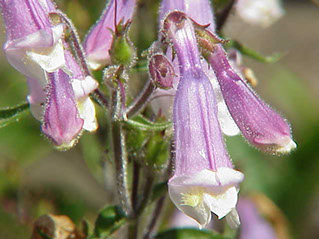
Hairy Beardtongue, Penstemon hirsutus, a perennialnative to most of eastern North America, except for the far south. Blooms June into July.
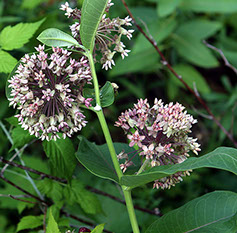
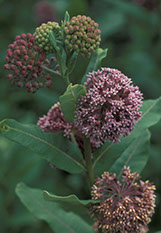
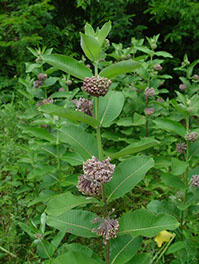
Common Milkweed, Asclepias syriaca, a native plant that is one of 140 species of milkweed, the sole food of monarch butterflies and their larvae, and food for many other creatures. Beautiful, fragrant flowers bloom in mid to late June. A perennial found in open fields. Valley Forge Park is a great place to see it.
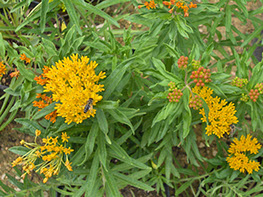
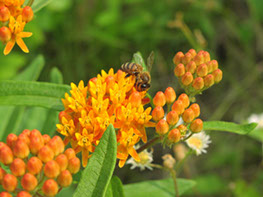
Orange Milkweed or Butterfly Milkweed, Asclepias tuberosa, A native species whose beautiful flowers bloom in mid to late June into July. A perennial found in open fields.


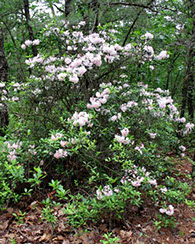
Mountain Laurel, Kalmia latifolia. The state flower of Pennsylvania and Connecticut.
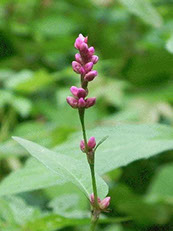
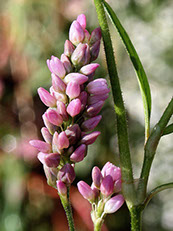
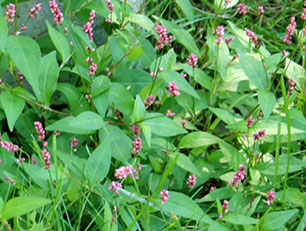
Pennsylvania Smartweed or Knotweed, Polygonum pensylvanicum, a eastern North American native, member of the buckwheat family. Smooth edged eaves about an inch long, pinhead sized buds in elongated clusters, tiny flowers. Major food source for birds. Blooms throughout summer.

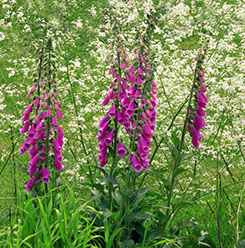

Purple Foxglove, Digitalis purpurea, naturalized European grows on three to five foot stalks. The source of the heart drug Digoxin or Digitalis.
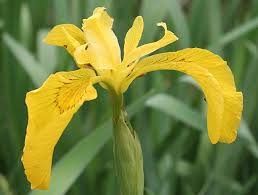


Wild Iris, members of the family Iris, which has more than 200 species. Named after the ancient greek goddess of the rainbow, these showy flowers come in a wide range of colors. A native perennial plant, the wild ones bloom June into July.
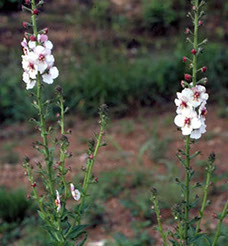

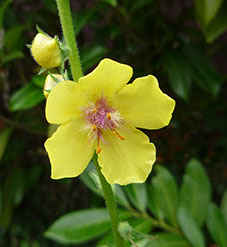
Moth Mullein, Verbascum blattaria, naturalized or invasive native of Eurasia and north Africa. May be white, yellow or shades between.



Wild Blue Phlox oe Wild Sweet William, Phlox divaricata, a perennial native to eastern North America. Flower has five petals, while the similar Dame's Rocket has four. Blooms late May into June.
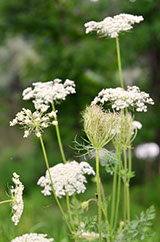

Queen Anne's Lace, Daucus carota, native of Europe, now found worldwide. May or may not have a tiny red flower in the center. The wild ancestor of the carrot. Pull one and look at and smell the root,
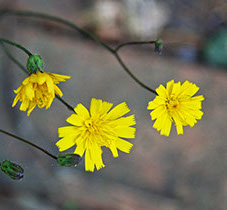


Rattlesnake Weed, Hieracium venosum, a perennial native to eastern North America. Flowers up to an inch across grow on leafless stems that may be as tall as two feet. Blooms late May well into June. The distinctive leaves make this plant easy to identify.
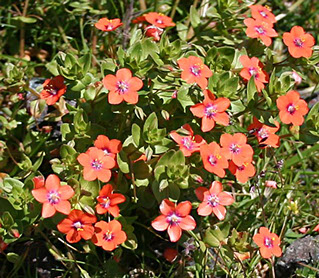

Scarlet Pimpernel, Anagallis arvensis, an annual native of Europe, Western Asia, North Africa and possibly parts of North America, now naturalized worldwide. This low growing plant does will in poor soil. Blooms June through September in our area. The flowers, which are samller than a dime, open only in direct sunlight.
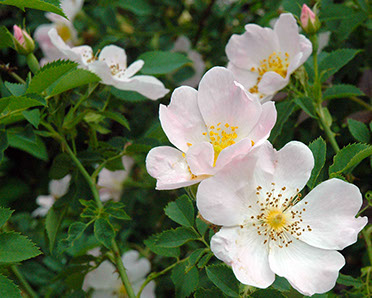
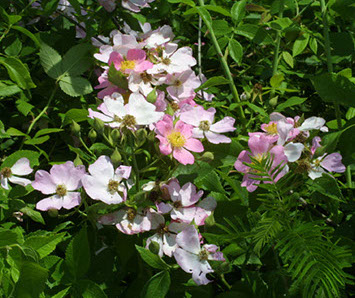
Native wild roses: The Virginia Rose, Rosa virginiana (left) , and the Field Rose, Rosa arvensis. Both are perennials native to eastern North America. The former is a bush or shrub that likes full sun and has many thorns, and may grow to six feet or more tall. The latter prefers woodland verges and field edges and climbs on other plants and fences, and has far fewer thorns. Both have white to pink flowers with five petals about two inches across. Both bloom late May through most of summer, and produce bright red rose hips.

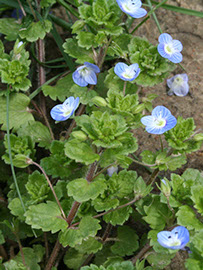
Speedwell, Persian Speedwell, Birdseye Speedwell, Veronica persica, is a seed propagated annual native to Eurasia found throughout North America. Blooms April to August with very tiny flowers less than a quarter inch across.


Spiderwort, Tradescantia virginiana, is a perennial native to the eastern United States, sometimes cultivated in gardens. Its leaves and stalks can grow up to three feet high and the three petal flowers are an inch to two inches across. Blooms mid-May into June.


Tulip Poplar, Liriodendron tulipifera. This tall native hardwood tree not only produces straight-grained lumber, it blooms with large, beautiful flowers up to five inches across that many people do not notice until the flowers fall to the ground. Blooms late May into June.
_-_laeken.jpg?crc=3804976774)

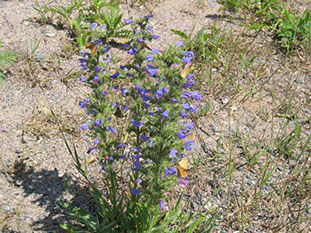
Viper's Bugloss or Blueweed, Echium vulgare, a biannual European native naturalized throughout most of North America. Sometimes grown as an oilseed plant. Grows in open areas and thrives in poor soil.

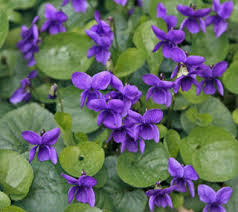
Violets, Viola sororia, synonym Viola papilionacea, is a native of eastern North America that can grow as an annual or as a perennial. Glossy, heart-shaped leaves may grow as tall as six to eight inches, topped with purple flowers with conspicuous white to yellow throats. Erect flower stem droop and produce whitish fruit with great quantities of seeds. Prefers damp woods and moist meadows. Bloom size a hal inch to an inch, they Bloom from April throughout summer. State flower of New Jersey.

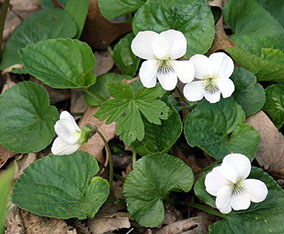
Sweet White Violet, Viola blanda, similar to Viola sororia, but with fragrant white flowers.

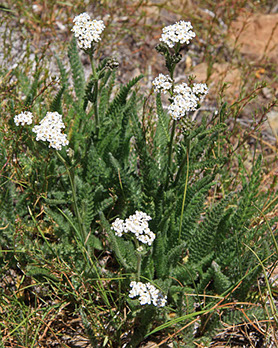
Yarrow, Achillea millefolium, is a perennial native to all parts of the northern hemisphere. In North America, it is a complex of both native and introduced plants and their hybrids. Botanically, it is either treated as ons species with several varities or as several species or sub-species. It grows to three foot tall with a single stem that does not branch except near the top, Blooms June through September.
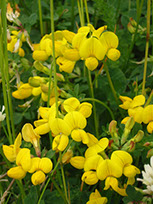
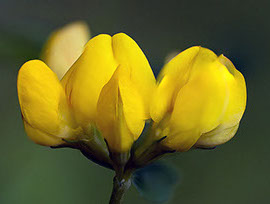
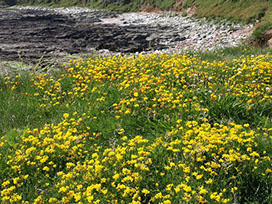
Birdsfoot Trefoil, Lotus corniculatus, Eurasian native widely grown as a forage crop. A pea family member that fixes nitrogen, withstands close grazing and is good for livestock. Blooms late May through summer.
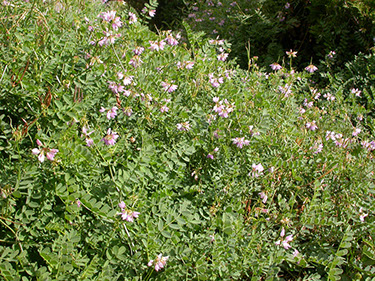
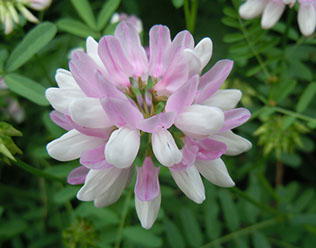
Problem invasive? Crown Vetch, Coronilla varia, is a nitrogen-fixing Eurasian native of the pea family widely used for erosion control since the 1950s. It was once extensively planted along highway cuts and embankments, but it's use has declined since it attracts deer, who like to eat it, and it is sensitive to the herbicides overused by some agencies (e.g., PA Turnpike Commission). Also planted as green manure crop to improve soil. Crowds out native vegetation. Blooms from June throughout summer.

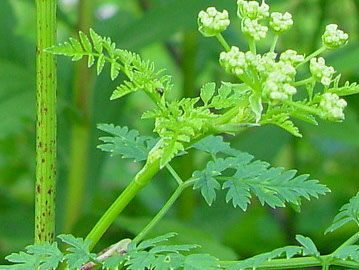
Poison Hemlock or Deadly Hemlock, Conium maculatum, is a highly toxic biennial native to Europe and Asia minor. It was originally imported as a garden ornamental, and is now wild across most of the US and Canada. It is not toxic to the touch, but all parts of the plant contain a powerful neurotoxin that can sicken and kill even in small amounts. It is mostly a threat to livestock and deer, but they tend to avoid it because it does not taste good. The chief threat to humans is that this plant may be mistaken for wild parsnip. Grows six feet or more high, and blooms late May to ??. It is easily identified by purple blotches on its stems. Prefers moist soil and commonly grows along woodland verges and in ditches and depressions that hold moisture. Not related to the native hemlock tree, this is the plant used to kill Socrates, and many other ancient Greeks.

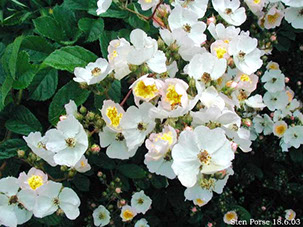

Problem invasive: Multiflora Rose, Rosa multiflora. An invasive species from Asia, and legally a noxious weed in Pennsylvania and New Jersey. This thorn-studded pest disrupts native ecosystems, and its removal is often the target of trail crews.

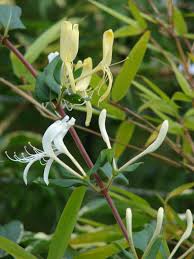
Problem invasive species: Japanese Honeysuckle, or just Honeysuckle, Lonicera japonica. Indigenous to Japan and Korea, it crowds out native vegitation and kills young trees by girdling them. It has a big flush of flowers in June, then continues blooming but with fewer flowers through summer, more so in sunny locations.

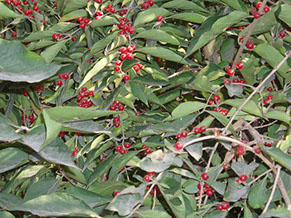
Problem invasive species: Amur Honeysuckle or Phoneysuckle, Lonicera maackii. Indigenous to east Asia. Flowers look like honeysuckle, but have no scent. Plant is a woody shrub, rather than vines. A pest here; an endangered species in Japan.
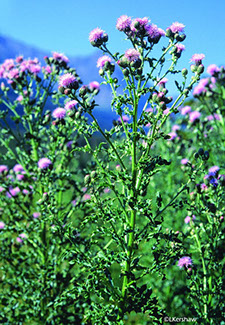
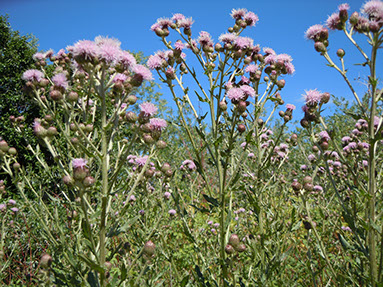
Problem invasive species: Canada Thistle, Cirsium arvense, Is from Europe, not Canada. Its prickly leaves make pasture and silage grasses inedible to livestock, and a field of these is nearly impassible to hikers. Likes sun, and crowds out native vegetation. Dime to nickle sized flowers, many on a stalk, distinguish it from the larger-flowered bull thistle.
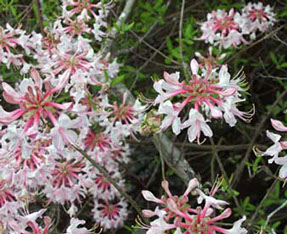
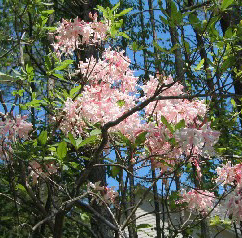
This is a quick guide to some of wildflowers you might see in bloom in our region in June. Do a web search on each plant for larger photos and detailed information. Spring and summer blooming happens latter in the north and at higher altitude.
If you know of a flowering wild plant that is missing, contact webkeeper@amcdv.org. All photos are in the commons for non-commercial use, as is the information on this page.
